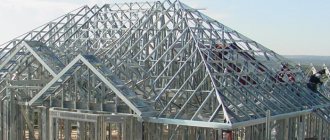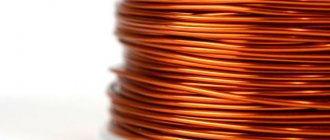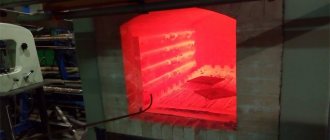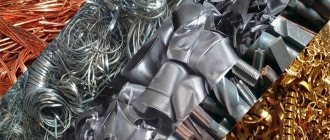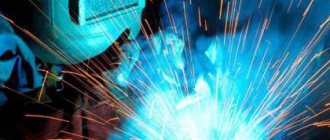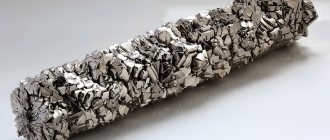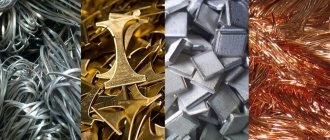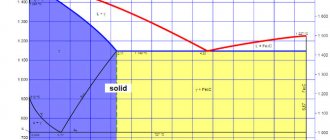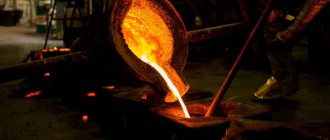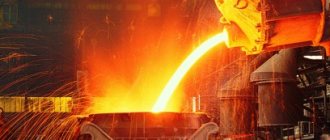Despite its high prevalence, the recognition of titanium as a structural material took place relatively recently - only in the 20th century. Its alloys compare favorably with other compounds. With a long list of benefits, they find wide application in various fields. Modern technological capabilities allow us to produce a wide variety of rolled products - pipes, sheets, hexagons, foil, tapes, plates. Let us consider in more detail all the main features of the material in the article.
general characteristics
In the periodic table of elements of D.I. Mendeleev, Ti is located in group IV of the 4th period at number 22. In the most important and most stable compounds, the metal is tetravalent. In appearance it resembles steel. Very common in nature. Its content in the earth's crust is higher than copper, lead and zinc.
The relative molecular mass of a substance shows how many times the mass of a given molecule is greater than 1/12 the mass of a carbon atom, and the relative atomic mass of an element is how many times the average mass of atoms of a chemical element is greater than 1/12 the mass of a carbon atom. Titanium in the free state exists in the form of monatomic Ti molecules. The values of its atomic and molecular masses coincide. They are equal to 47.867.
The main mechanical properties of titanium alloys include:
- Resistance to corrosive processes. This property is superior to steel. Does not corrode in air, sea water, wet chlorine and other technological solutions and reagents, so the material is indispensable in the chemical, pulp and paper, and oil industries.
- Lightness. It is in demand where a very light substance is needed that can withstand heavy loads and ultra-high temperature ranges - aircraft and rocket production.
- High specific strength. The indicator is approximately 2 times higher than iron and 6 times higher than aluminum. The tensile strength is 300–450 MPa, but it can be increased to 2,000 MPa through hardening, aging and the addition of certain elements. At the same time, the material retains its strength characteristics even when exposed to low temperatures.
- Paramagneticity. It is not magnetized in a magnetic field, but is not pushed out of it either.
- Low thermal conductivity. At room temperature the average is - 18 W/(m deg). As it warms up, the indicator increases. Thermal expansion is 3 times less than iron and 12 times less than aluminum.
- Satisfactory technological ductility of some alloys. In a hot state, various semi-finished products are obtained - sheets, rods, stampings, profiles, etc. At the same time, mechanical processing causes many difficulties.
Thus, the metal combines strength and ductility well, but most mechanical properties are determined by the content of impurities. Polymorphic transformations have a decisive role in the formation of structure. This plays an important role in the heat treatment of parts in accordance with the requirements of the drawing.
Indicators of the specific gravity of other metals
Specific gravity is an indicator that is an integral characteristic of other metals.
The specific gravity of silver is affected by the fineness of the alloy. When other metals (copper, nickel) are added to it, the specific gravity and density are lost. Thus, the density of copper is 8.93 g/cm3, nickel – 8.91 g/cm3. All values are calculated using formulas.
Silver is the same noble metal as gold. Its specific gravity is 10.5 g/cm3. It melts at a temperature of 960 degrees. The main physical characteristics of silver are:
- corrosion resistance;
- low resistance;
- increased light reflectivity.
Despite its natural softness, silver has a high density and specific gravity.
Titanium is a non-ferrous metal of a white-silver hue. It has high strength, although it is light in weight. So, it is 12 times stronger than aluminum and 4 times stronger than copper and iron. In terms of the degree of presence in the earth's crust, titanium is given fourth place among the rest.
The low specific gravity of titanium - 4.505 g/cm3 is more consistent with alkali metals. An oxide film forms on its surface, which prevents the formation of corrosion.
Zinc is also a non-ferrous metal with a white-bluish tint. It has medium hardness and an initial melting point of 419 degrees. Under the influence of a temperature of 913 degrees, this metal acquires a vaporous state. Zinc has a specific gravity of 7.13 g/cm3.
Normal temperature makes zinc brittle, but increasing it to 100 degrees makes the metal flexible and ductile. When interacting with air, an oxide film forms on the surface of zinc.
The color of lead is dirty gray, but this does not affect the natural shine of the metal. However, the glow stops quite quickly due to the formation of an oxide film on the surface of the lead. The lead alloy has a high specific gravity - 11.337 g/cm3. In this indicator, it exceeds zinc, aluminum, iron and some other metals. Despite its high density, lead is a very soft metal.
The table shows the specific gravity and melting points of other metals.
| Name of metal | Melting point, °C | Specific gravity, g/cc |
| Zinc | 419.5 | 7.13 |
| Aluminum | 659 | 2.69808 |
| Lead | 327.4 | 11.337 |
| Tin | 231.9 | 7.29 |
| Copper | 1083 | 8.96 |
| Titanium | 1668 | 4.505 |
| Nickel | 1455 | 8.91 |
| Magnesium | 650 | 1.74 |
| Vanadium | 1900 | 6.11 |
| Tungsten | 3422 | 19.3 |
| Chromium | 1765 | 7.19 |
| Molybdenum | 2622 | 10.22 |
| Silver | 1000 | 10.5 |
| Tantalum | 3269 | 16.65 |
| Iron | 1535 | 7.85 |
| Gold | 1095 | 19.32 |
| Platinum | 1760 | 21.45 |
Marking features
In accordance with GOST 19807-91, they are designated by the letters VT, OT, PT (V, O, P - identifier of the development organization or manufacturer, T - titanium) and numbers indicating the serial number of the alloy depending on the chemical composition.
B - VIAM titanium - All-Russian Research Institute of Aviation Materials (VIAM, Moscow);
O - Experimental titanium - a joint development of VIAM and the Verkhnyaya Salda Metallurgical Production Association (VSMPO, Verkhnyaya Salda, Sverdlovsk region);
P - Prometheus titanium - Central Research Institute of Structural Materials "Prometheus" (St. Petersburg).
In addition to the general division, Ti alloys are given other special designations. They correspond to the composition and parameters:
- technical grades VT1-1, VT1-0, VT1-00 contain titanium from 99.3 to 99.9%;
- titanium sponges TG-90, TG-110, TG-150, TG-120, TG-Tv, TG-130, TG-100;
- foundry - VT20L, VT21L, VT14L, VT9L, VT6L, VT1L, VT3-1L, VT5L.
In some cases, an additional letter is placed after the serial number of the alloy:
U - improved,
M - modified,
And - special purpose,
B - with a predominance of vanadium as an alloying element.
Application
We have already spoken in part about the use of titanium and its alloys. It is used to produce parts for the aviation industry, mechanical engineering, space industry, submarines, and consumer goods. However, statistical studies by Titanium Corporation for 2005 give the following estimate for the consumption of this material.
- Only 7% of titanium is used in mechanical engineering.
- 13% goes to paper production.
- 20% is used in making plastic.
- And 60% in the manufacture of paints.
But let's look at the recommendations. Ti alloys of low strength and high ductility are designed for effective use in the aviation and space industries, the chemical industry, and the production of thermal and cryogenic equipment. Almost all types of workpieces are produced from it, and are used for the manufacture of welded structural elements.
Ti of medium strength is recommended for use in the production of refrigeration equipment, shipbuilding, the production of various containers, parts operating for a long time at a temperature of 400 °C, 750-800 °C for a short time, depending on the type of alloy, these recommendations may differ.
High-strength Ti alloys are recommended for use in the manufacture of critical parts and structural elements operating under load, turbines, welded structural elements, stamped products and parts designed to operate at temperatures of 400 °C, 750 °C for a short time.
Types of titanium alloys
Classification is carried out according to a fairly large number of characteristics.
- Based on manufacturing technology, they are divided into:
- to deformable ones. This includes alloys with aluminum (VT5), as well as additionally alloyed with tin or zirconium (VT5-1). They are characterized by increased heat resistance, high thermal stability, lack of cold brittleness, and good weldability;
foundries They use technical titanium and alloys of the VT5L, VT14L, VT6L, VT9L, VTZ-1L brands. In terms of their chemical composition, they are almost identical to the previous group, but a higher content of impurities is allowed in them. In addition, the mechanical properties are lower than the deformable ones.
- According to the level of mechanical properties:
- for alloys of low strength and high ductility. The group includes grades VT1-00, VT1-0 (technical titanium) and OT4-0, OT4-1 (Ti-Al-Mn system), AT3 (Ti-Al system with small additions of Cr, Fe, Si, B);
medium strength - VT5 and VT5-1; pseudo-a-alloys OT4, VT20; (α + β)-alloys PT3V, as well as VT6, VT6S, VT14 in the annealed state;
- high strength - achieved in grades VT6, VT14, VT3-1 due to strengthening treatment. VT22 is a high-alloy alloy that has a tensile strength σв > 1000 MPa even in the annealed state.
- According to the conditions of use:
- for cold-resistant ones - industrial domestic modifications VTbkt, VT5-1kt, PTZVkt and foreign Ti-5Al-2.5Sn ELI, Ti-6A1-4V ELI. Maintain sufficient impact strength at cryogenic temperatures;
heat-resistant - VT6, VT8-1, VT8M-1, VT25U, VT41, etc. They are solid solutions with a greater or lesser amount of a chemical compound. This provides them with increased heat resistance with a minimal decrease in ductility;
- corrosion resistant. Tantalum, niobium, molybdenum, and zirconium are often used as alloying additives.
- According to the ability to be strengthened by heat treatment:
- for hardening - (α+β) and β alloys;
non-hardening - α-alloys.
Titanium and its alloys
Titanium ranks fourth among structural metals in terms of abundance in the earth's crust, second only to aluminum, iron and magnesium (Fig. 1). Titanium has a specific gravity of about 4500 kg/m3 and a fairly high melting point, ~1665± 5°C. Titanium is a paramagnetic metal.
a b
Rice. 1. Titanite – a potential source of titanium (a), a bar of crystalline titanium (b)
Titanium is a hard metal: it is 12 times harder than aluminum, 4 times harder than iron and copper. Titanium is chemically resistant. A persistent oxide film TiO2 , as a result of which it has high corrosion resistance in fresh and sea water and in some acids, and is resistant to stress corrosion. In humid air, sea water and nitric acid, it resists corrosion no worse than stainless steel, and in hydrochloric acid it is many times better. At temperatures above 500°C, titanium and its alloys easily oxidize and absorb hydrogen, which causes embrittlement (hydrogen embrittlement).
Titanium has two polymorphic modifications (Fig. 2):
- low-temperature modification α – Ti, stable up to 882°С, (GP – lattice, a = 0.296 nm, c = 0.472 nm)
- high-temperature β - Ti, stable above 882 ° C (bcc - lattice, a = 0.332 nm).
Rice. 2. Two polymorphic modifications of titanium: a – αTi (hexagonal close-packed lattice), b – β-Ti (body-centered crystal lattice)
Mechanical properties of titanium.
Note. Unlike the martensite of carbon steels, which is an interstitial solution and is characterized by high strength and brittleness, titanium martensite is a substitutional solution, and hardening of titanium alloys to martensite leads to slight strengthening and is not accompanied by a sharp decrease in ductility.
The mechanical properties of titanium are significantly affected by impurities of oxygen, hydrogen, carbon and nitrogen , which form interstitial solid solutions and intermediate phases with titanium: oxides, hydrides, carbides and nitrides, increasing its strength characteristics while reducing ductility. Therefore, the content of these impurities in titanium is limited to hundredths and even thousandths of a percent. The danger of hydrogen embrittlement, especially in stressed welded structures, limits the hydrogen content. In technical titanium it is in the range of 0.008 - 0.012%.
Titanium has high strength and specific strength even in deep cold conditions, while maintaining sufficient ductility.
| ToS | +20 | -70 | -196 | |
| δ, % | 20-30 | 10-5 | 3-10 | |
| σв, MPa | 600-700 | 800…900 | 1000…1200 |
The high ductility of titanium compared to other metals with an hcp lattice ( Zn, Mg, Cd ) is explained by a large number of slip and twinning systems (Fig. 3) due to the low ratio c/a = 1.587. Apparently, this is due to the high cold resistance of titanium and its alloys.
Rice. 3. Schemes of slip and twinning systems
The industrial method of titanium production consists of enrichment and chlorination of titanium ore, followed by its reduction from titanium tetrachloride with magnesium metal (magnesium-thermal method). Sponge titanium obtained by this method (GOST 17746–79), depending on the chemical composition and mechanical properties, is produced in the following grades: TG-90, TG-100, TG-110, TG-120, TG-130, TG-150, TG-TV (see table 1).
The numbers mean Brinell hardness HB, TV - hard.
Table 1. Grades, chemical composition (%) and hardness of titanium sponge (GOST 17746–79)
| Brand | Ti, no less | No more | Hardness HB, 10/1500/30, no more | ||||||
| Fe | Si | Ni | C | Cl | N | O | |||
| TG-90 | 99,74 | 0,05 | 0,01 | 0,04 | 0,02 | 0,08 | 0,02 | 0,04 | 90 |
| TG-100 | 99,72 | 0,06 | 0,01 | 0,04 | 0,03 | 0,08 | 0,02 | 0,04 | 100 |
| TG110 | 99,67 | 0,09 | 0,02 | 0,04 | 0,03 | 0,08 | 0,02 | 0,05 | 110 |
| TG-120 | 99,64 | 0,11 | 0,02 | 0,04 | 0,03 | 0,08 | 0,02 | 0,06 | 120 |
| TG-130 | 99,56 | 0,13 | 0,03 | 0,04 | 0,03 | 0,10 | 0,03 | 0,08 | 130 |
| TG-150 | 99,45 | 0,2 | 0,03 | 0,04 | 0,03 | 0,12 | 0,03 | 0,10 | 150 |
| TG-TV | 99,75 | 1,9 | – | – | 0,10 | 0,15 | 0,10 | – | – |
To obtain monolithic titanium, the sponge is ground into powder, pressed and sintered, or melted in arc furnaces in a vacuum or an atmosphere of inert gases.
The mechanical properties of titanium are characterized by a good combination of strength and ductility. For example, technically pure titanium grade VT1-0 has : σв = 375–540 MPa, σ0.2 = 295–410 MPa, δ = 20%, and according to these characteristics it is not inferior to a number of carbon and Cr-Ni corrosion-resistant steels.
Titanium can be pressed well when hot and satisfactorily when cold. It is easily rolled, forged, and stamped (Fig. 4). Titanium and its alloys are well welded by resistance and argon arc welding, providing high strength and ductility of the welded joint (Fig. 5). The disadvantage of titanium is its poor machinability due to its tendency to stick, low thermal conductivity and poor anti-friction properties.
Rice. 4. Preparation of a titanium fighter frame before and after pressing on a stamping press
Rice. 5. Argon welding of titanium
Note. When welding titanium and its alloys, special attention must be paid to the cleanliness of the workplace. For welding shops where work is carried out with various metals, it is necessary to allocate a special area that will be used specifically for welding titanium. The place allocated for this must be protected from air flow, moisture, dust, grease and other contaminants that may interfere with quality welding. The area must be protected from processes such as stripping, cutting and painting. In addition, air humidity must be controlled.
Phase transformations in titanium alloys
The formation of the structure and, consequently, the properties of titanium alloys is decisively influenced by phase transformations associated with the polymorphism of titanium. Table 2 presents diagrams of the state diagrams “titanium - alloying element”, reflecting the division of alloying elements into four groups according to the nature of their influence on the polymorphic transformations of titanium.
- α – Stabilizers ( Al, O, N ), which increase the temperature of the polymorphic transformation α↔β and expand the range of solid solutions based on α -titanium. Considering the embrittling effects of nitrogen and oxygen, only aluminum is of practical importance for alloying titanium. It is the main alloying element in all industrial titanium alloys, reduces their density and susceptibility to hydrogen embrittlement, and also increases strength and elastic modulus. Alloys with a stable α -structure are not strengthened by heat treatment.
- Isomorphic β - stabilizers ( Mo, V, Ni, Ta, etc.), which lower the temperature of the α↔β transformation and expand the range of solid solutions based on β - titanium.
- Eutectoid-forming β-stabilizers ( Cr, Mn, Cu , etc.) can form TiX- . In this case, upon cooling, the β – phase undergoes the eutectoid transformation β + TiХ . Most β -stabilizers increase the strength, heat resistance and thermal stability of titanium alloys, while somewhat reducing their ductility. In addition, alloys with ( α + β ) and pseudo – β – structure can be strengthened by heat treatment ( hardening + aging ).
- Neutral elements ( Zr, Sn ) do not have a significant effect on the temperature of the polymorphic transformation and do not change the phase composition of titanium alloys.
The main purpose of alloying titanium alloys is to increase strength, heat resistance and corrosion resistance. Alloys of titanium with aluminum, chromium, molybdenum, vanadium, manganese, tin and other elements are widely used. Alloying elements have a great influence on the polymorphic transformations of titanium.
For titanium alloys, the following types of heat treatment : annealing, hardening and aging, as well as chemical-thermal treatment (nitriding, siliconizing, oxidation, etc.).
Annealing is carried out for all titanium alloys in order to complete the formation of the structure, leveling out structural and concentration heterogeneity, as well as mechanical properties. The annealing temperature should be higher than the recrystallization temperature, but lower than the transition temperature to the β state in order to avoid grain growth. is used , double or isothermal (to stabilize the structure and properties), incomplete (to relieve internal stresses).
Hardening and aging (hardening heat treatment) is applicable to titanium alloys with ( α + β ) - structure. The principle of strengthening heat treatment is to obtain metastable phases β and α with their subsequent decomposition with the release of dispersed particles of α and β phases during artificial aging. In this case, the strengthening effect depends on the type, quantity and composition of metastable phases, as well as the dispersity of the α and β phase particles formed after aging.
Chemical-thermal treatment is carried out to increase hardness and wear resistance, resistance to “setting” when working under friction, fatigue strength, as well as improving corrosion resistance, heat resistance and heat resistance. Nitriding, siliconizing and some types of diffusion metallization have practical applications.
table 2
Industrial titanium alloys.
Titanium alloys, compared to technical titanium, have higher strength, including at high temperatures, while maintaining fairly high ductility and corrosion resistance.
According to manufacturing technology, titanium alloys are divided into wrought and cast alloys; according to the level of mechanical properties - alloys of low strength and high ductility, medium strength, high strength; according to the conditions of use - cold-resistant, heat-resistant, corrosion-resistant. According to their ability to be strengthened by heat treatment, they are divided into hardenable and non-hardenable , and according to their structure in the annealed state - into α, pseudo-α, (α + β), pseudo-β and β-alloys (Table 3).
Table 3
Deformable titanium alloys
Titanium alloys of low strength and increased ductility
This group includes alloys with tensile strength σ ≥ 700 MPa , namely: α - alloys of grades VT1-00, VT1-0 (technical titanium) and alloys OT4-0, OT4-1 (Ti-Al-Mn system), AT3 (Ti-Al system with small additions of Cr, Fe, Si, B), related to pseudo-α-alloys with a small amount of β-phase. The strength characteristics of these alloys are higher than those of pure titanium due to impurities in the VT1-00 and VT1-0 and minor alloying with α - and β - stabilizers in the OT4-0, OT4-1, AT3 alloys.
These alloys are characterized by high ductility in both hot and cold states, which makes it possible to obtain all types of semi-finished products: foil, tape, sheets, plates, forgings, stampings, profiles, pipes, etc. (Fig. 6).
Rice. 6. Products made of titanium alloys
Forging, volumetric and sheet stamping, rolling, pressing are carried out in a hot state. Final rolling, sheet stamping, drawing and other operations are carried out in a cold state.
To relieve internal stresses resulting from mechanical processing, sheet stamping, welding, etc., incomplete annealing is used.
These alloys are well welded by fusion welding (argon arc, submerged arc, electroslag) and contact (spot, roller). In fusion welding, the strength and ductility of the welded joint are almost similar to the base metal.
The corrosion resistance of these alloys is high in many environments (sea water, chlorides, alkalis, organic acids, etc.), except for solutions of HF, H2SO4, HCl and some others.
Application. These alloys are widely used as structural materials for the manufacture of almost all types of semi-finished products, parts and structures, including welded ones. Their most effective use is in
aerospace engineering (Fig. 7), in chemical engineering, cryogenic technology (high impact strength is maintained down to –253oC), (Table 4), as well as in units and structures operating at temperatures up to 300–350 ° C.
Rice. 7. Application of titanium alloys in aerospace engineering
Table 4 Mechanical characteristics of titanium alloys at low temperatures
| Alloy | σв (MPa) at temperature, ° C | δ (%) at temperature, ° C | KSU, J/cm2 at temperature, ° C | |||||
| –196 | –253 | –269 | –196 | –253 | –269 | –196 | –253 | |
| VT1-0 | 920 | 1310 | – | 48 | 24 | – | 220 | 130 |
| VT5-1 | 1200– 1350 | 1350– 1600 | 1710 | 15 | 8–10 | 9,3 | 40 | 30 |
| OT4 | 1430 | 1560 | – | 13 | 16 | – | 50 | 40 |
| OT4-1 | 1080 | 1390 | – | 19,4 | 17,5 | – | 23 | 30 |
| VT3-1 | 1650 | 2060 | 2020 | 6,5 | 7,5 | 3 | 30 | 60 |
| VT6 | 1640 | 1820 | – | 17,8 | 3,5 | – | 39 | 40 |
| VT6S | 1310 | 1580 | – | 7–10 | 3–6 | – | 40 | 25 |
| VT14 | 1650 | – | – | 10 | – | – | 40 | – |
Medium strength titanium alloys
This group includes alloys with tensile strength σв = 750–1000 MPa , namely: α – alloys of grades VT5 and VT5-1 ; pseudo – α – alloys of grades OT4, VT20 ; (α + β) – alloys of grades PT3V , as well as VT6, VT6S, VT14 in the annealed state. For the classification and chemical composition of these alloys, see table. 5 .
Alloys VT5, VT5-1, OT4, VT20, PT3V, VT6S , containing a small amount of β - phase (2–7% β - phase in the equilibrium state), are not subjected to strengthening heat treatment and are used in the annealed state. VT6S alloy is sometimes used in a thermally strengthened state. Alloys VT6 and VT14 are used both in annealed and thermally strengthened states. In the latter case, their strength becomes above 1000 MPa, and they will be discussed in the section on high-strength alloys.
The alloys under consideration, along with increased strength, retain satisfactory ductility in the cold state and good ductility in the hot state, which makes it possible to obtain all types of semi-finished products from them: sheets, strips, profiles, forgings, stampings, pipes, etc. The exception is the VT5 , from which sheets and plates are not produced due to low technological plasticity.
This category of alloys accounts for the main volume of production of semi-finished products used in mechanical engineering.
All medium-strength alloys can be welded well by all types of welding used for titanium. The strength and ductility of a welded joint made by fusion welding is close to the strength and ductility of the base metal (for VT20 and VT6S this ratio is 0.9–0.95). After welding, partial annealing is recommended to relieve internal welding stresses.
Table 5
The machinability of these alloys is good. Corrosion resistance in most aggressive environments is similar to technical titanium VT1-0.
Application. These alloys are recommended for use in the manufacture of sheet stamping products ( OT4, VT20 ), for welded parts and assemblies, for stamp-welded parts ( VT5, VT5-1, VT6S , VT20 ), etc. VT6S is widely used for the manufacture of high-pressure vessels and containers ( Fig. 8). Parts and assemblies made of OT4, VT5 can operate for a long time at temperatures up to 400 ° C and for a short time - up to 750 ° C; from alloys VT5-1, VT20 - long-term at temperatures up to 450-500 ° C and short-term - up to 800-850 ° C. Alloys VT5-1, OT4, VT6S are also recommended for use in refrigeration and cryogenic technology.
Rice. 8. Products from titanium alloys VT6S High-strength titanium alloys
This group includes alloys with tensile strength σв ≥ 1000 MPa , namely (α + β) - alloys of grades VT6, VT14, VT3-1, VT22 . High strength in these alloys is achieved by strengthening heat treatment (hardening + aging). The exception is the high-alloy VT22 , which even in the annealed state has σв > 1000 MPa .
These alloys, along with high strength, retain good ( VT6 ) and satisfactory ( VT14, VT3-1, VT22 ) technological plasticity in the hot state, which makes it possible to obtain various semi-finished products from them: sheets ( except VT3-1 ), rods, plates, forgings, stampings, profiles, etc. VT6 and VT14 in the annealed state ( σв ≥ 850 MPa ) can be subjected to cold sheet stamping with small deformations.
Despite the heterophasic structure, the alloys under consideration have satisfactory weldability with all types of welding used for titanium. To ensure the required level of strength and ductility, complete annealing must be carried out, and for the VT14 (with a thickness of the parts being welded 10–18 mm), it is recommended to carry out quenching followed by aging. In this case, the strength of the welded joint (fusion welding) is at least 0.9 of the strength of the base metal. The ductility of the welded joint is close to the ductility of the base metal.
Machinability is satisfactory. Cutting processing of alloys can be carried out both in the annealed and thermally strengthened states.
These alloys have high corrosion resistance in the annealed and thermally strengthened states in a humid atmosphere, sea water, and in many other aggressive environments, like technical titanium.
Heat treatment. Alloys VT3-1, VT6, VT6S, VT14, VT22 are subject to hardening and aging. Recommended heating modes for hardening and aging for monolithic products, semi-finished products and welded parts are given in Table. 6.6.
Cooling during hardening is carried out in water, and after aging - in air. Full hardenability is ensured for parts made of VT6, VT6S with a maximum cross-section of up to 40 - 45 mm, and for parts made of VT3-1, VT14, VT22 - up to 60 mm.
To ensure a satisfactory combination of strength and ductility of alloys with (α + β) - structure after hardening and aging, it is necessary that their structure before strengthening heat treatment be equiaxed or “basket weave”. Examples of initial microstructures that provide satisfactory properties are shown in Fig. 9.
Table 6. Modes of strengthening heat treatment of titanium alloys
| Alloy grade | Polymorphic transformation temperature Tpp, ° C | Heating temperature for hardening, ° C | temperature , ° C | Duration of aging, h |
| VT3-1 | 960–1000 | 860–900 | 500–620 | 1–6 |
| VT6 | 980–1010 | 900–950 | 450–550 | 2–4 |
| VT6S | 950–990 | 880–930 | 450–500 | 2–4 |
| VT8, VT9 | 980–1020 | 920–940 | 500–600 | 1–6 |
| VT14 | 920–960 | 870–910 | 480–560 | 8–16 |
| VT22 | 840–880 | 690–750 | 480–540 | 8–16 |
Rice. 9. Structure of VT14 alloy before strengthening heat treatment
Application . High-strength titanium alloys are used for the manufacture of critical parts and assemblies: welded structures ( VT6, VT14 ) Fig. 10, turbines ( VT3-1 ), stamped-welded units ( VT14 ), highly loaded parts and stamped structures ( VT22 ). These alloys can operate at temperatures up to 400°C for a long time and up to 750°C for a short time.
A feature of high-strength titanium alloys as a structural material is their increased sensitivity to stress concentrators. Therefore, when designing parts from these alloys, it is necessary to take into account a number of requirements (increased surface quality, increased transition radii from one section to another, etc.), similar to those that exist when using high-strength steels.
Rice. 10. Welded structure made of VT14 alloy
Cast titanium alloys
Titanium cast alloys are divided into 5 groups depending on the microstructure (α - alloys, pseudo α - alloys, α + β alloys, pseudo β - alloys, β - alloys).
The composition of titanium alloys includes aluminum, vanadium, molybdenum, silicon, chromium, zirconium, etc. These alloys have properties that set them apart from other alloys: they are not inferior in strength to steel, and have a fairly low density (~4.5 g/mm3 ), high chemical resistance at temperatures up to 500 ° C, high corrosion resistance in humid air, sea water, nitric and hydrochloric acid. Thanks to these properties, titanium alloys are being intensively introduced into aircraft, rocket and shipbuilding.
The reference literature provides the chemical composition and mechanical properties of eight cast titanium alloys - VT1L, VT5L, VT20L, VT3-1L, VT6L, VT9L, VT14L, VT22L, where the letter B means the name of the development organization ( VIAM ), T - titanium alloy, L – foundry, number – alloy number. The new alloy VT35L is also mentioned .
Titanium alloys have good fluidity (460–520 mm), small linear (0.8–1.2%) and volumetric (2.4–3.2%) shrinkage.
VT3-1L alloy is one of the most widely used in production (Fig. 11).
Strength of titanium alloys σв = 34...93 kg/mm2 , ductility δ = 4–10%.
The main disadvantage of titanium casting alloys is their high melting point (up to 1665 °C) and active interaction (during melting) with all gases and refractory materials. Hence the problem of melting (vacuum, in an atmosphere of neutral gases) and materials for casting molds, which sharply increases the cost of casting processes.
Rice. 11. Parts made of titanium grade VT3-1L
290
Areas of application
An ideal material for many industries that require low weight, high strength and long service life. Widely used:
- in aviation, rocketry and space technology. In the aircraft industry, titanium is used to make products of complex spatial configurations, places for highly loaded components and assemblies, as well as engine parts. Titanium alloy with nickel is especially common in the space industry;
- shipbuilding. Indispensable for cladding, production of pump and pipeline parts. Low density makes it possible to significantly reduce the weight of the ship, while improving maneuverability and cruising range. Due to its high corrosion resistance, the casing does not require painting, and the body does not rust or break down in salt water for decades;
- mechanical engineering - in chemical, heavy, energy and transport, for light industry, food industry and household appliances. Manufactured equipment is conventionally divided into specialized serial and non-standard (for the needs of a specific machine-building plant);
- ferrous metallurgy - equipment for coke-chemical, metallurgical, steel-smelting and ferroalloy production;
- non-ferrous metallurgy ranks second among civil industries. It is most widespread in the cobalt-nickel and titanium-magnesium industries, as well as in the production of copper, zinc, lead, mercury and other metals;
- pulp and paper and food industries. The material provides reliable protection against corrosion and also meets the high sanitary and hygienic requirements of food production;
- medical industry. Commercially pure titanium and Ti6-4Eli are used in the production of surgical instruments, internal and external prostheses, crutches and wheelchairs.
Titanium industry
There are about one billion tons of confirmed titanium reserves in the world. Although titanium was discovered in the 18th century and was isolated in its pure form in the 19th century, titanium production began to take off industrially only in the 20th century. The titanium industry and the main reserves of titanium ores are concentrated in China, Russia, the USA, Japan, Kazakhstan and Ukraine. If titanium resource consumption continues at the same rate, Ti reserves will last for about another 150 years. For clarity, we have provided a summary of the titanium industry for 1996-2001.
The titanium industry in Russia is gaining momentum, VSMPO-Avisma is one of the leading manufacturers in this industry. The experience of this enterprise is very interesting and is clearly described in the Forbes magazine article - “Titanic production: how the largest titanium manufacturer in the world works.” This article states that VSMPO has two factories near the Ural Range. TG - titanium sponge is produced in Bereznyaki, Perm region, and blanks in the form of ingots and other semi-finished products are produced in Verkhnaya Sled.
The plant, where parts are made from titanium, employs about 100 people in three shifts. Products are manufactured using advanced technologies, using expensive machines and automatic machines, each costing about $5 million. The machines were delivered from the USA, with the consent of the President himself, Barack Obama. The factories' products are in demand all over the world. This enterprise produces parts for Formula 1 cars, products from Boeing, Airbus and others.
Heat treatment features
Carried out to improve performance. Depending on the chemical composition and purpose, the alloys are subjected to:
- annealing. It is one of the most common types of heat treatment and provides sufficient strength when forming heterophase structures. There are several types of annealing:
- recrystallization - temperature 520–850 °C. Its indicators increase for alloying elements. The temperature is also affected by the type of semi-finished product - higher for rods, forgings, stampings and lower for sheets;
- with phase recrystallization - the heating temperature depends on the alloy and is 750–950 °C. Thus, they reduce hardness, increase plasticity, achieve grain refinement and eliminate structural heterogeneity;
Intermetallic titanium alloys
Today, the need for fundamentally new structural materials is increasing. For example, hardened heat-resistant alloys can no longer fully meet the requirements of aerospace technology. Of the intermetallic titanium alloys, the most widely used are:
Advantages and disadvantages
Like any other metal, titanium has its strengths and weaknesses. Benefits include:
- light weight;
- corrosion resistance;
- resistance to high temperatures;
- high strength - greater than that of the best steels.
Flaws:
- Dust and chips remaining after processing titanium workpieces can ignite at a temperature of 400 degrees.
- This metal is difficult to weld and is practically impossible to cut.
- The costly method of obtaining metal from ore causes its high cost.
However, despite the existing disadvantages, the material and its alloys are widely used in various industries.
Light weight
Structural high-strength vehicles
Ultimate strength σв > 1000 MPa for grades VT6, VT14, VT3-1, VT22, VT23M. They are characterized by satisfactory weldability with all types of welding. These alloys have high corrosion resistance in the annealed and thermally strengthened states in a humid atmosphere, sea water, and many other aggressive environments.
In addition, applications will always require improvements in their performance properties through new thermal and thermomechanical treatments. Among the most promising are the VT23M. It combines high strength and crack resistance of both the base material and welded joints. In many ways it surpasses foreign analogues in properties and cost due to the reduced content of molybdenum and vanadium, the exclusion of tin and zirconium. All types of rolled, forged, pressed semi-finished products, as well as monolithic, welded and brazed structures are made from it.
Heat-resistant Ti alloys
In the 60s In the 20th century, domestic specialists developed, among others, new titanium alloys VT3-1, VT8, VT8-1, VT8M-1, VT9, VT25U, VT18U. Currently, they are inferior to the best foreign alloys IMI834 and Ti1100 only in creep resistance and at temperatures above 500 °C. Domestic VT-25 has strength indicators of up to 1150 MPa and reaches the peak of its properties at a temperature of 550 °C. At the same time, one of our best alloys used in industry can be called VT-18. It has the most strength properties at a temperature of 600 °C.
It should be noted that the prospects for increasing the heat resistance of Ti alloys remain extremely small. This is due to the fact that at a temperature of 620 °C the oxidation mechanism of the alpha phase of titanium changes dramatically. The properties deteriorate due to the penetration of oxygen through the oxide film into the thickness of the metal. And the area of application of protective coatings has yet to be studied. Now the main search for heat-resistant compounds is increasingly shifting towards titanium intermetallic compounds.
Production Features
Titanium production is a complex, time-consuming and expensive process. The element forms chemical compounds and solid solutions with many metals, and therefore requires special conditions when created.
Among the most common raw materials for titanium production are titanium-magnetite ores, from which ilmenite concentrate is obtained. The process takes several stages:
- obtaining titanium slag by reduction smelting. The concentrate and reducing agent are loaded into the electric arc furnace. They heat up to 1650 degrees Celsius. Cast iron is formed from reduced and carburized iron, and titanium oxide turns into slag, which contains 82-90% TiO2;
- obtaining titanium tetrachloride by chlorination. It is carried out in continuous mine chlorinators or in salt chlorinators. Chlorine gas acts on TiO2 at temperatures of 700–900 °C;
- production of titanium (sponge, powder) by reduction from tetrachloride. For this, magnesium or sodium is used.
Useful tips from the MAZPROM team
We would like to draw your attention to several points when choosing rolled titanium.
- Due to complex and energy-intensive technological processes, the production cycle time for titanium sheet is about 90 days. Therefore, if you come across the fact that a company offers you to purchase any brands and sizes, and thousands of tons are indicated in stock, then do not rush to believe it. Of course, with the workpieces available in production, the period can be reduced to approximately one month.
- Be sure to check the age of the material before purchasing. Although titanium retains all its properties over time, it is recommended that it be no older than 10 years. The fact is that there is still metal on sale that was manufactured back in the 1980s. It would be good if it was in storage at one of the defense enterprises, which then sold it on the market as illiquid. It is much more dangerous to buy rental equipment that may have already been used before. For example, pipes and sheets are cut from heat exchangers that are no longer in use. The danger lies not only in various defects, but also in a possible high level of radiation.
- To be sure of the quality of the product, request a sample for preliminary testing.
When you contact us, you will receive rolled titanium that fully complies with current GOSTs and TUs. For consultation, please call the phone number listed on the website.

